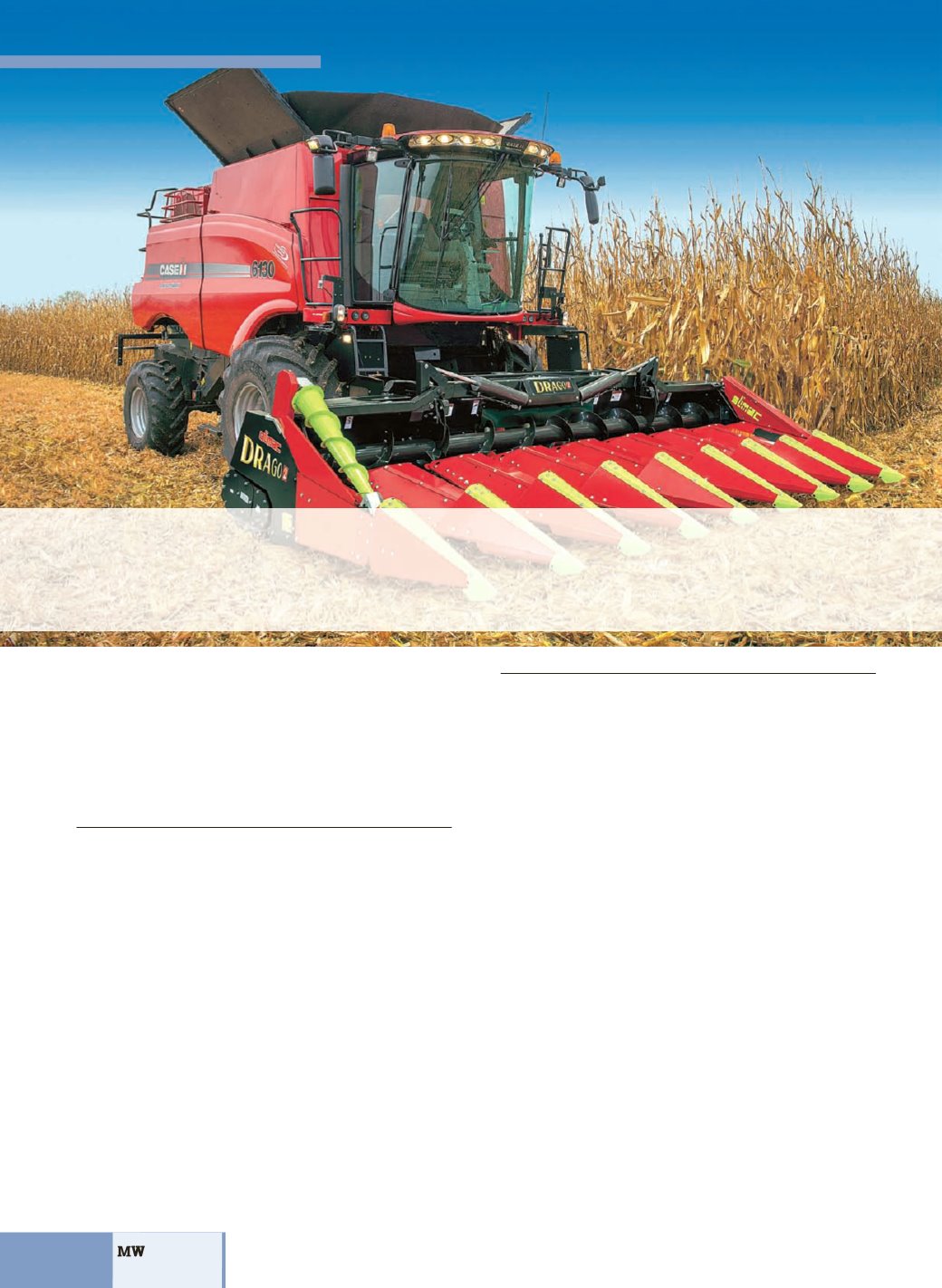

NUOVI ASSOCIATI
di Giovanni M. Losavio
L
a nascita della Olimac, impresa con sede a Margarita (Cu-
neo), è legata allo sviluppo di una soluzione per i siste-
mi di raccolta del mais. Correvano i primi anni ‘50 quan-
do Emilio Olivero, che diede un contributo decisivo alla nasci-
ta dell’azienda, ebbe un’intuizione: se si fosse modificata l’ar-
chitettura costruttiva della testata, adottando un profilo leg-
germente concavo, “ad anfiteatro”, si sarebbe riusciti ad otti-
mizzare la lavorazione della granella. In altri termini, sarebbe
stato possibile dividere le pannocchie dal fusto e sgranellare
il mais lasciando gli steli sul terreno ad andane. All’epoca, l’i-
dea di Olivero rappresentava una novità assoluta – che avreb-
be reso molto più profittevole la coltivazione del mais, allora
penalizzata da sistemi di raccolta poco efficienti – che aspet-
tava solo di prendere forma. A dargliela, tuttavia, non fu il suo
ideatore, ma il genero, Giuseppe Carboni, il quale, seguendo
le indicazioni di Emilio riuscì a trasformare il progetto (brevet-
tato come Testata Integrale) in una macchina pienamente ope-
rativa. Sin da quei primi anni di attività – la Olimac venne fon-
data da Giuseppe Carboni e dalla moglie Maria – venne fatta
una chiara scelta di campo alla quale il management continua
ad essere fedele: si decise cioè di puntare tutto sul segmen-
to di mercato della raccolta del mais, rinunciando quindi a di-
di Giovanni M. Losavio
T
he establishment of the manufacturer Olimac, head-
quartered in Margarita, near Cuneo, is linked to the
development of a solution for a corn harvesting sys-
tem. In the early 1950s Emilio Olivero came up with a deci-
sive contribution to the formation of the company with the
idea of changing the design of the corn head by using a slight-
ly concave shape in the form of an amphitheater to enable
optimum operations on the crop. In other words, this con-
figuration would make it possible to separate the ears from
the stalk and kernels leaving the stalks on the ground for
windrowing. At the time, Olivero’s intuition was totally new
and would have made corn yields much more profitable com-
pared to inefficient harvesting methods waiting only to take
shape. Emilio did not bring this about but his brother-in-law,
Giuseppe Carboni, followed Emilio’s instructions and was able
to transform the project (patented as an Integral Text) into a
fully operative machine. Following those early years, Olimac
was established by Giuseppe Carboni and his wife, Maria,
with a clear course of management has been followed loy-
ally ever since. The decision was to aim work exclusively on
the field of corn, or maize, harvesting and give up product
diversification. Also this intuition was a winner because the
manufacturer was able to focus all their resources on a
unique sector, continuously update the technologies for their
machinery and offer avant-garde solutions. Pursuing this
course with the Drago series of corn heads, which consoli-
dated the manufacturer’s standing on global markets with
98% of production earmarked for export, Olimac embarked
on a high tech range led by the Drago GT.This new corn head
came away from the Fieragricola 2016 edition with a New
Technologies prize. There are three models of the Drago, the
88
n. 7-9/2016
Innovazione tecnologica, pianificazione dei
processi di fabbrica, impianti produttivi di nuova
generazione. Sono questi i fattori che hanno
permesso alla cuneese Olimac di imporsi sui
mercati globali con una gamma di macchine
“hi tech” per la raccolta del mais. Dall’export
deriva il 98% del fatturato dell’impresa
Olimac
, alta specializzazione
nei sistemi di
raccolta
del mais
















